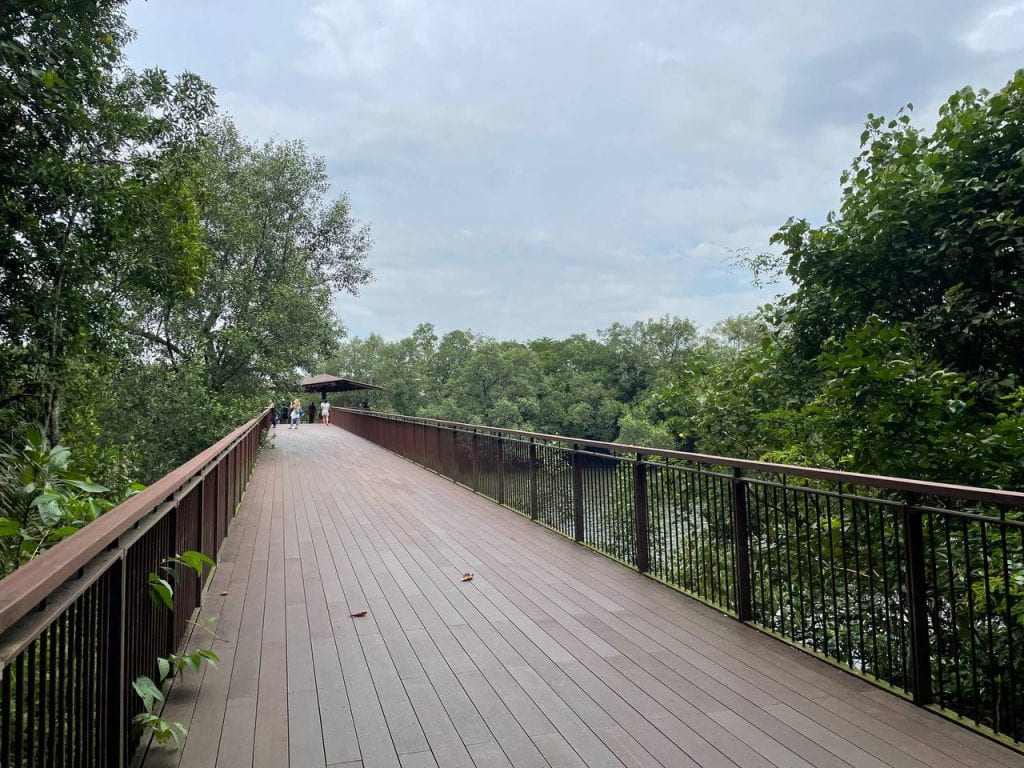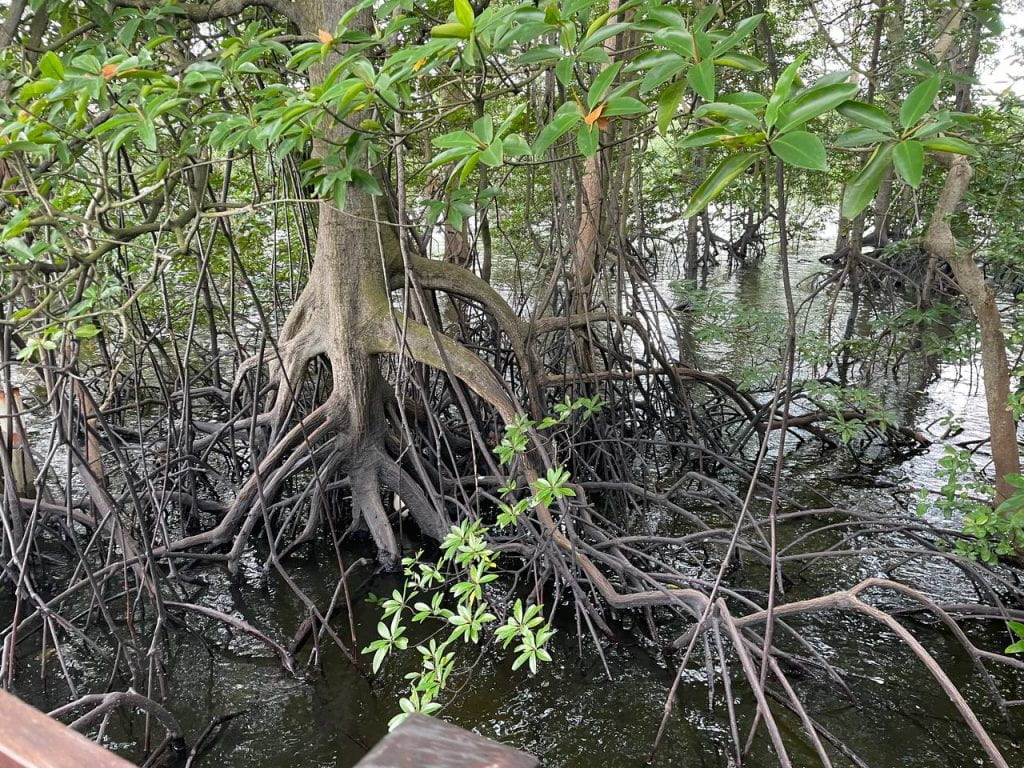As a landscape architecture student who has had experience designing for freshwater ecosystems and urban waterways, I was excited to get my feet wet in the intricacies of the tidal recharge and discharge which mangrove ecosystems are built upon. Our field trip to Sungei Buloh Wetland Reserve with my NUS GE3255 Aquatic, Riparian, and Coastal Systems module succeeded in answering some of my curiosities as I saw the land’s transition with my own eyes, and then some!

Fig. 1: A view of the main bridge which spans across the vast central river channel
Traversing the wooden boardwalk, we walked out from the heart of the tropical rainforest, and I strained my senses to attune myself to the subtle changes in the environment as we drew closer to the sea. The air took on a salty, almost sandy flavour, and the terrestrial species like Ficus benjamina, Asplenium nidus and other large woody trees gave way to ferns, palms, and coastal species capable of withstanding being flooded and a sandy substrate.
The canopy opened up, and various bare spots where the understory layer was exposed revealed the incredible root systems running along the ground, swampy ephemeral pools, and moist, decaying leaf litter layering over the sandy substrate. The long woody roots stretched towards the sea, seeking moisture. The regular recharging and discharging within this transitory area caused by tidal action had washed away much of the substrate, revealing much more of the forest floor than I had seen before.

Fig. 2: The tropical forest transitions into coastal mangroves, showcasing the effect of tidal action

Fig. 3. Unique and elaborate prop root network on display, drawing attention to its adaptations for salinity and low tide
The tide rose as we walked closer to the sea, and the biodiversity changed once more, from the brackish tolerant terrestrial species to fully mangrove species capable of having their roots and rhizomes completely submerged, like Acrostichum speciosum and Rhizophora mangle. The mudskippers basking on rocks and roots in shallow pools gave way to crabs seeking refuge from the incoming tide in little divots in tree trunks, and cichlids leaping from the water in the horizon.

Fig. 4. Trees frame the open sea at high tide
I never would have guessed that I would have been so enthralled by a simple walk spanning less than 500 metres long. What I had originally assumed would be a mere pass-through path to reach the main attraction of the field trip surprisingly became one of the cornerstone takeaways I had from that site visit. Being starkly aware of that landward-seaward transition reframed my perspective of mangroves’ interactions with its surrounding ecosystems reliant on their ecological services, and is now certainly something I now hope others to personally experience and look out for when visiting mangrove systems.
Written by: Kuan Shiqi Nadia
Leave a Reply